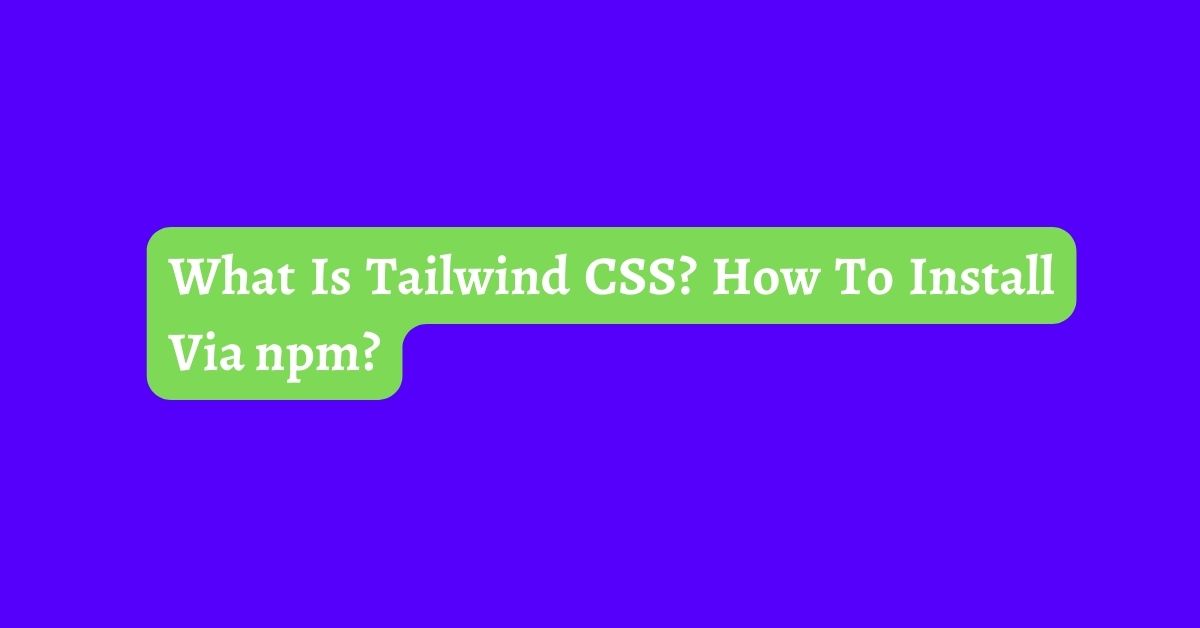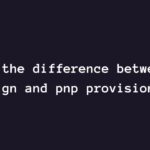|
Getting your Trinity Audio player ready... |
Introduction
Are you tired of getting lost in the complexity of traditional CSS frameworks? Tailwind CSS might be just what you need. This utility-first framework is changing the game by allowing developers to craft beautiful, responsive designs with ease. Instead of struggling with extensive custom styles, Tailwind CSS offers a straightforward approach that makes web development more intuitive and efficient.

Understanding Utility-First CSS
Before diving into Tailwind CSS, it’s crucial to know the concept of utility-first CSS. This approach prioritizes using small, single-purpose utility classes directly in your HTML to control design aspects such as margin, padding, color, and typography.
Why is this beneficial? For starters, it encourages a consistent design language across your project and eliminates the need for writing custom CSS from scratch. With utility-first CSS, you can build complex designs quickly and efficiently by composing utility classes like building blocks.
Getting Started with Tailwind CSS
Ready to try Tailwind CSS for yourself? Here’s how you can get started:
- Using a CDN:
- The simplest way to use Tailwind CSS is by including the CDN link in your HTML file. This method is perfect for small projects or trying out the framework without any setup hassles.
<link href="https://cdn.jsdelivr.net/npm/tailwindcss@2.2.19/dist/tailwind.min.css" rel="stylesheet">- Installing via npm:
- For more control and customization, install Tailwind CSS using npm. This approach is recommended for larger projects.
npm install tailwindcss- Next, generate a Tailwind config file to customize the framework according to your project needs.
npx tailwindcss init- Setting up a Tailwind CSS project:
- Create an
index.htmlfile and include the Tailwind CSS link. - Add a custom CSS file and use the
@tailwinddirectives to include base, components, and utilities:
@tailwind base;
@tailwind components;
@tailwind utilities;- Run the Tailwind CLI to generate your CSS file:
npx tailwindcss -i ./src/input.css -o ./dist/output.css --watchCore Concepts of Tailwind CSS
Tailwind CSS is all about leveraging utility classes to build your design. Here are some core concepts to understand:
- Utility Classes:
- These classes are the backbone of Tailwind CSS. They allow you to apply specific styles to elements, like
.text-centerfor centering text or.bg-blue-500for a blue background.
- Responsive Design:
- Tailwind CSS makes it easy to create responsive designs with its mobile-first approach. Use responsive modifiers like
sm:,md:,lg:, andxl:to apply styles at different breakpoints.
- Customization:
- Tailwind is highly customizable. You can configure your design system by modifying the
tailwind.config.jsfile, which allows you to add custom colors, fonts, and more.
Key Features of Tailwind CSS
Tailwind CSS offers many features that make it an excellent choice for developers:
- Pre-defined Utility Classes:
- With thousands of pre-defined utility classes, you can quickly style any element without writing custom CSS.
- Dark Mode Support:
- Tailwind CSS has built-in support for dark mode, allowing you to easily toggle between light and dark themes using the
dark:variant.
- State Variants:
- Tailwind provides state variants like
hover:,focus:, andactive:to style elements based on user interaction.
- Typography and Color Utilities:
- Control text styles and colors with ease using utility classes for fonts, sizes, and colors.
Building a Simple Layout with Tailwind CSS
Let’s put Tailwind CSS to work by building a simple, responsive layout:
- Creating a Responsive Navigation Bar:
<nav class="bg-gray-800 p-4">
<div class="container mx-auto flex justify-between">
<a href="#" class="text-white text-lg font-bold">Logo</a>
<div class="hidden md:flex space-x-4">
<a href="#" class="text-gray-300 hover:text-white">Home</a>
<a href="#" class="text-gray-300 hover:text-white">About</a>
<a href="#" class="text-gray-300 hover:text-white">Contact</a>
</div>
</div>
</nav>- Designing a Grid Layout:
<div class="container mx-auto grid grid-cols-1 md:grid-cols-3 gap-4 mt-8">
<div class="bg-white p-6 shadow-lg">Content 1</div>
<div class="bg-white p-6 shadow-lg">Content 2</div>
<div class="bg-white p-6 shadow-lg">Content 3</div>
</div>- Styling Buttons and Forms:
<form class="bg-white p-6 shadow-lg mt-8">
<label for="email" class="block text-sm font-medium text-gray-700">Email</label>
<input type="email" id="email" class="mt-1 block w-full px-3 py-2 border border-gray-300 rounded-md shadow-sm focus:outline-none focus:ring-indigo-500 focus:border-indigo-500 sm:text-sm">
<button type="submit" class="mt-4 px-4 py-2 bg-blue-500 text-white rounded hover:bg-blue-600">Submit</button>
</form>Customizing Tailwind CSS
One of the key advantages of Tailwind CSS is its flexibility in customization. Here’s how you can tailor it to fit your needs:
- Extending the Default Theme:
- Add new colors, fonts, or spacing values by modifying the
tailwind.config.jsfile.
module.exports = {
theme: {
extend: {
colors: {
customBlue: '#1E40AF',
},
},
},
};- Adding Custom Utility Classes:
- Create your utility classes to define specific styles not covered by Tailwind’s default classes.
.custom-border {
border: 2px dashed #4A5568;
}- Using Plugins:
- Enhance Tailwind CSS’s functionality by incorporating plugins, such as
@tailwindcss/typographyfor advanced typography styles.
Tailwind CSS Best Practices
To get the most out of Tailwind CSS, follow these best practices:
- Keep Your Codebase Clean:
- Regularly remove unused utility classes and keep your HTML tidy to maintain readability.
- Organize Your Styles:
- Use component-based architecture and group related utility classes for better organization.
- Avoid Common Pitfalls:
- Don’t overuse utility classes, which can lead to bloated HTML and reduced maintainability.
Performance Considerations
Tailwind CSS is known for its efficiency, but here are some tips to optimize performance further:
- Purging Unused CSS:
- Use Tailwind’s purge feature to remove unused CSS classes in production builds, reducing file size and improving load times.
js
module.exports = {
purge: ['./src/**/*.html'],
// other configurations...
};- Best Practices for Production:
- Minify your CSS files and use a content delivery network (CDN) to improve loading speeds.
Comparison with Other CSS Frameworks
Tailwind CSS offers unique advantages compared to traditional frameworks like Bootstrap and Bulma:
- Tailwind CSS vs. Bootstrap:
- Tailwind is more flexible and allows for easier customization compared to Bootstrap’s component-based approach.
- Tailwind CSS vs. Bulma:
- While Bulma focuses on simplicity and ease of use, Tailwind offers more granular control over design with its utility-first approach.
Tailwind CSS in Real-world Projects
Many popular websites have adopted Tailwind CSS for its versatility and efficiency. Some examples include:
These sites showcase Tailwind CSS’s capability to handle large-scale projects with ease.
Community and Ecosystem
Tailwind CSS boasts a vibrant community and an ever-growing ecosystem. Here are some resources to get involved:
- Tailwind CSS Resources:
- Official documentation: Tailwind CSS Docs
- Tailwind UI: A library of pre-designed components for Tailwind CSS
- Contributing to the Community:
- Engage with other developers on forums and contribute to open-source projects to help the Tailwind community grow.

Conclusion
Tailwind CSS has proven itself as a powerful and flexible framework for building modern, responsive designs. Its utility-first approach allows for rapid prototyping and easy customization, making it an excellent choice for developers of all skill levels. By adopting Tailwind CSS, you can streamline your workflow and focus on creating beautiful, functional designs.
FAQs
- Is Tailwind CSS suitable for beginners?
- Yes, Tailwind CSS is beginner-friendly and easy to learn, especially with its extensive documentation and community support.
- Can I use Tailwind CSS with other frameworks like React or Vue?
- Absolutely! Tailwind CSS works seamlessly with modern JavaScript frameworks such as React, Vue, and Angular.
- How does Tailwind CSS handle browser compatibility?
- Tailwind CSS is designed to be compatible with all modern browsers and includes fallbacks for older versions.
- What are the limitations of using Tailwind CSS?
- The main limitation is the potential for verbose HTML, but this can be managed with careful organization and component-based architecture.
- How can I transition an existing project to Tailwind CSS?
- Transitioning to Tailwind CSS involves gradually replacing custom styles with utility classes, leveraging Tailwind’s powerful customization options to fit your existing design system.
- Is Tailwind CSS better than CSS?
- Tailwind CSS is built on top of CSS and simplifies styling with its utility-first approach, offering predefined classes for quick design implementations. Whether it’s “better” depends on your needs. Tailwind provides faster development and design consistency, while plain CSS offers full control and flexibility.
- Is Tailwind CSS better than Bootstrap?
- Tailwind CSS and Bootstrap serve different purposes. Tailwind offers more flexibility and customization through utility classes, while Bootstrap provides ready-to-use components and a structured design system. Tailwind is ideal for unique designs, while Bootstrap is great for quick prototypes with a consistent look. Your choice depends on project requirements and personal preference.
Mastering Tailwind CSS for Forms
Tailwind CSS Cheat Sheet: Unveiling the Magic of Efficient Styling
Mastering Tailwind CSS Grid- Complete Guide
Arsalan Malik is a passionate Software Engineer and the Founder of Makemychance.com. A proud CDAC-qualified developer, Arsalan specializes in full-stack web development, with expertise in technologies like Node.js, PHP, WordPress, React, and modern CSS frameworks.
He actively shares his knowledge and insights with the developer community on platforms like Dev.to and engages with professionals worldwide through LinkedIn.
Arsalan believes in building real-world projects that not only solve problems but also educate and empower users. His mission is to make technology simple, accessible, and impactful for everyone.



